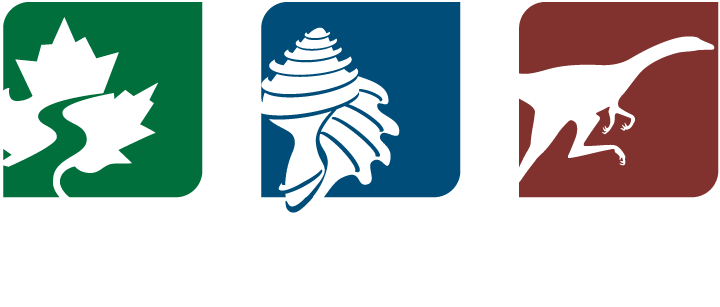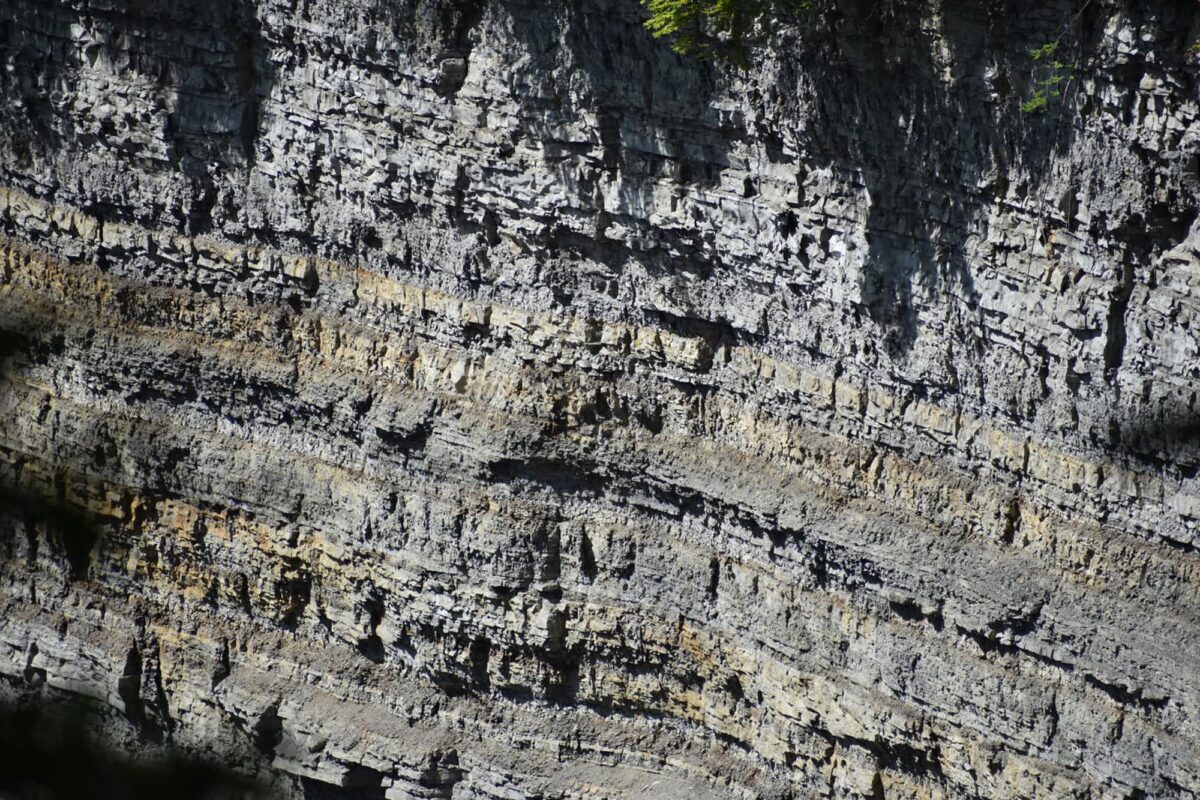Page snapshot: New York State Geologic Map; Fossil; 3D models; Rock; Mineral; Gem; Highest and Lowest Elevations; Places to Visit; and Additional Resources.
Image above: Upper Devonian rock strata exposed in the walls of Letchworth Gorge in Letchworth State Park, New York. Letchworth is commonly called the "Grand Canyon of the East." Photo by Kiera D. Crowley.
Geologic Map of New York
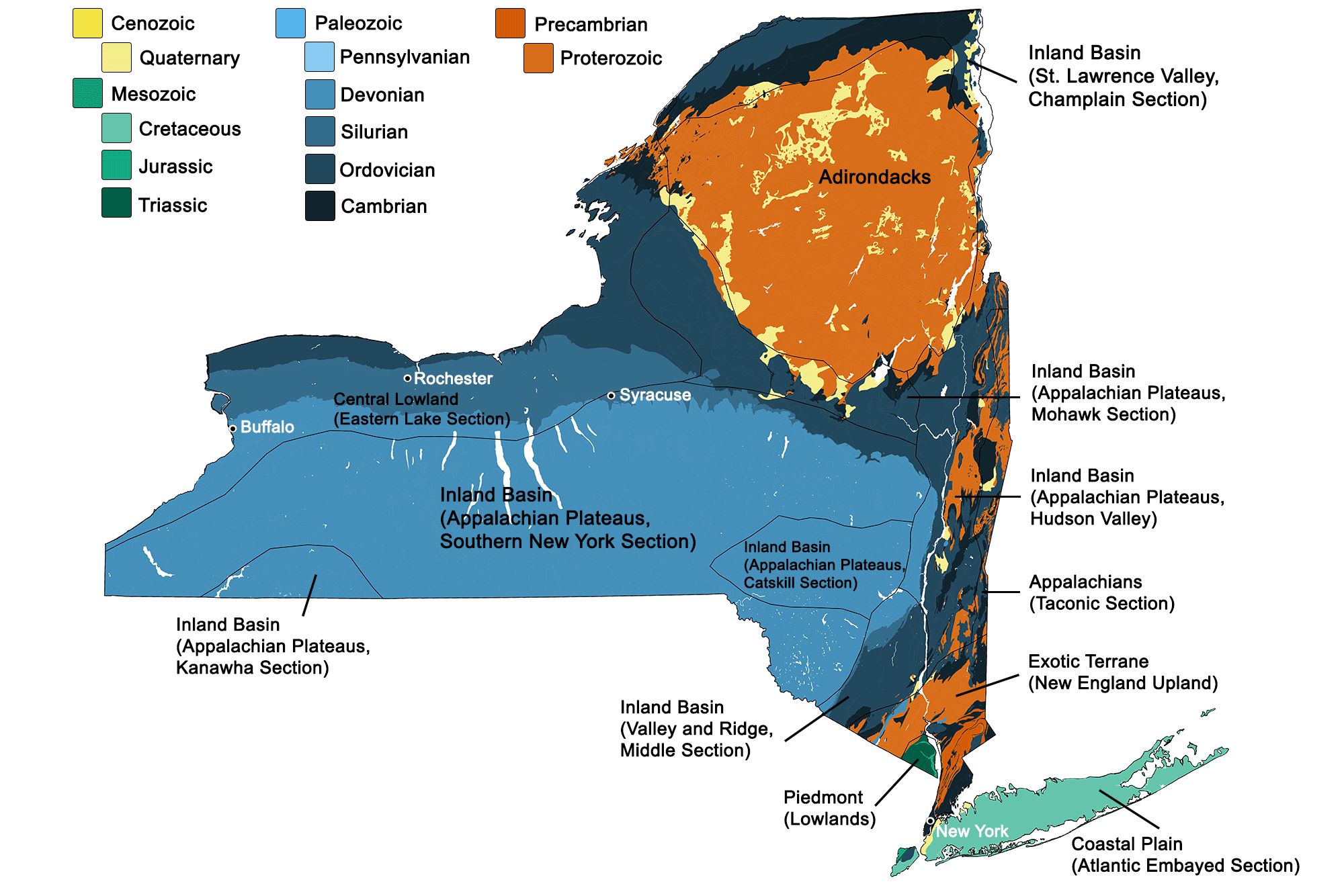
Geologic map of New York showing maximum ages of mappable units. Image by Kiera D. Crowley for the Earth@Home project developed using QGIS and USGS data (public domain) from Fenneman and Johnson (1946) and Horton et al. (2017).
New York State Fossil: Sea Scorpion
The sea scorpion Eurypterus remipes was named New York's state fossil in 1983. This species lived in the Silurian period roughly 410 million years ago, and could grow up to ~8 inches long.
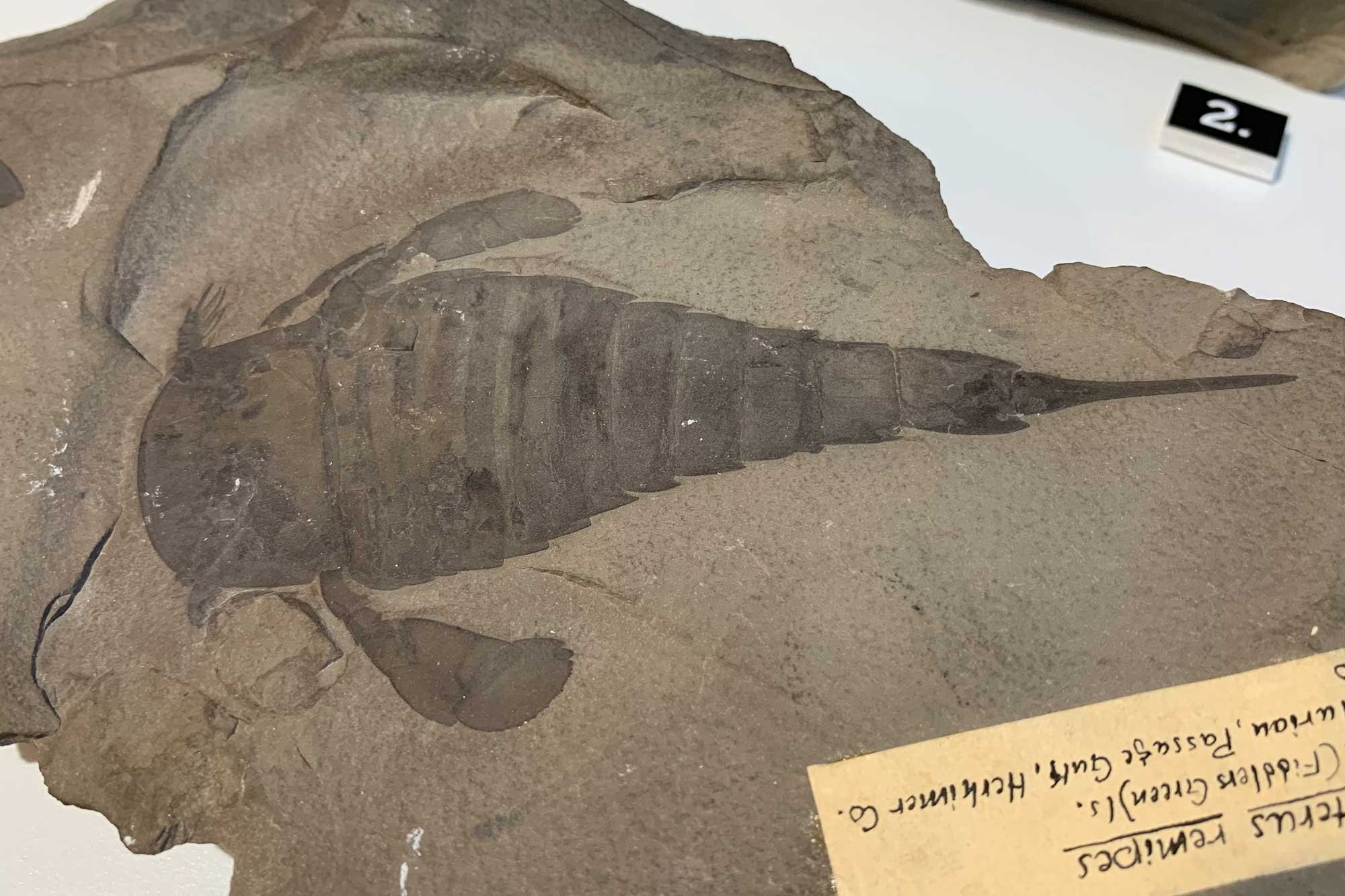
Complete specimen of Eurypteris remipes from the Silurian Bertie Limestone, Herkimer County, New York (PRI 70770).
3D Models of fossils from New York
Fossil rugose coral Heliophyllum delicatum from the Devonian of Central New York (PRI 50359). Specimen is from the collections of the Paleontological Research Institution, Ithaca, New York. Longest dimension of specimen is approximately 23 cm.
Fossil specimen of the brachiopod Mediospirifer audaculus from the Middle Devonian Moscow Formation of Livingston County, New York (PRI 70767). Specimen is from the collections of the Paleontological Research Institution, Ithaca, New York. Longest dimension of specimen is approximately 5 cm. Model by Emily Hauf.
Fossil specimen of the glass sponge Hydnoceras tuberosum from the Devonian of Steuben County, New York (PRI 76741). Specimen is from the collections of the Paleontological Research Institution, Ithaca, New York. Length of specimen is approximately 26 cm. Model by Emily Hauf.
Fossil specimen of the gastropod Platyostoma gebhardi from the Devonian of Schoharie, New York (PRI 76747). Specimen is from the collections of the Paleontological Research Institution, Ithaca, New York. Longest dimension of specimen is approximately 3.5 cm. Model by Emily Hauf.
Fossil specimen of the trilobite Eldredgeops rana from the Devonian Ludlowville Formation of Genesee County, New York (PRI 49811). Specimen is from the collections of the Paleontological Research Institution, Ithaca, New York. Trilobite is approximately 3 cm in length. Model by Emily Hauf.
Fossil specimens of the crinoid Melocrinus williamsi from the Devonian Ithaca Formation of Cortland County, New York. Specimen is from the collections of the Paleontological Research Institution, Ithaca, New York. Specimen preserves mineralized hard parts (stem segments) and external molds of stem segments and the calyx. Siltstone slab is approximately 29 cm in length. Model by Emily Hauf.
New York State Rock: None
New York does not yet have an official state rock.
New York State Mineral: None
New York does not yet have an official state mineral.
New York State Gem: Garnet
While garnet is found all around the world, it is particularly abundant in the state of New York, especially in the Adirondack mountains. In fact, the world's largest garnets (up to 1 meter big!) are found in Barton Mine, near Gore Mountain in the central Adirondacks.
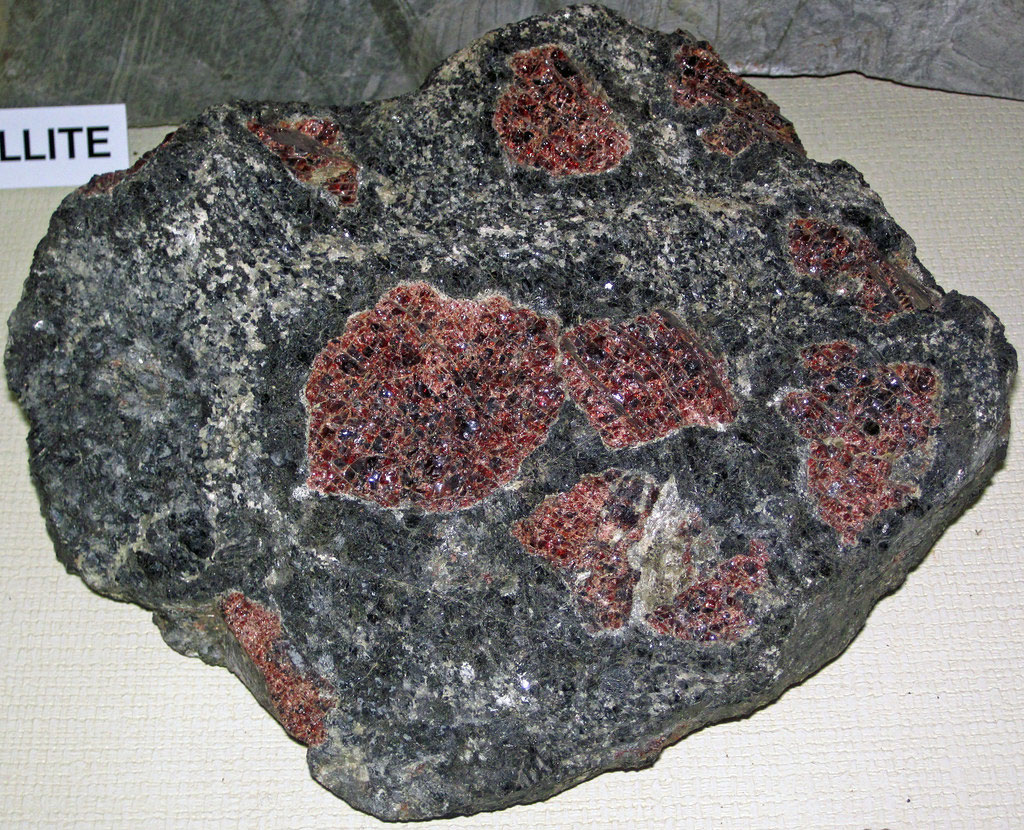
Rock specimen with large garnets (red) in an amphibolite (grey) matrix, from Gore Mountain in the Adirondacks of northern New York. Image by James St. John (Flickr; Creative Commons Attribution 2.0 Generic license).
New York's Highest and Lowest Elevations
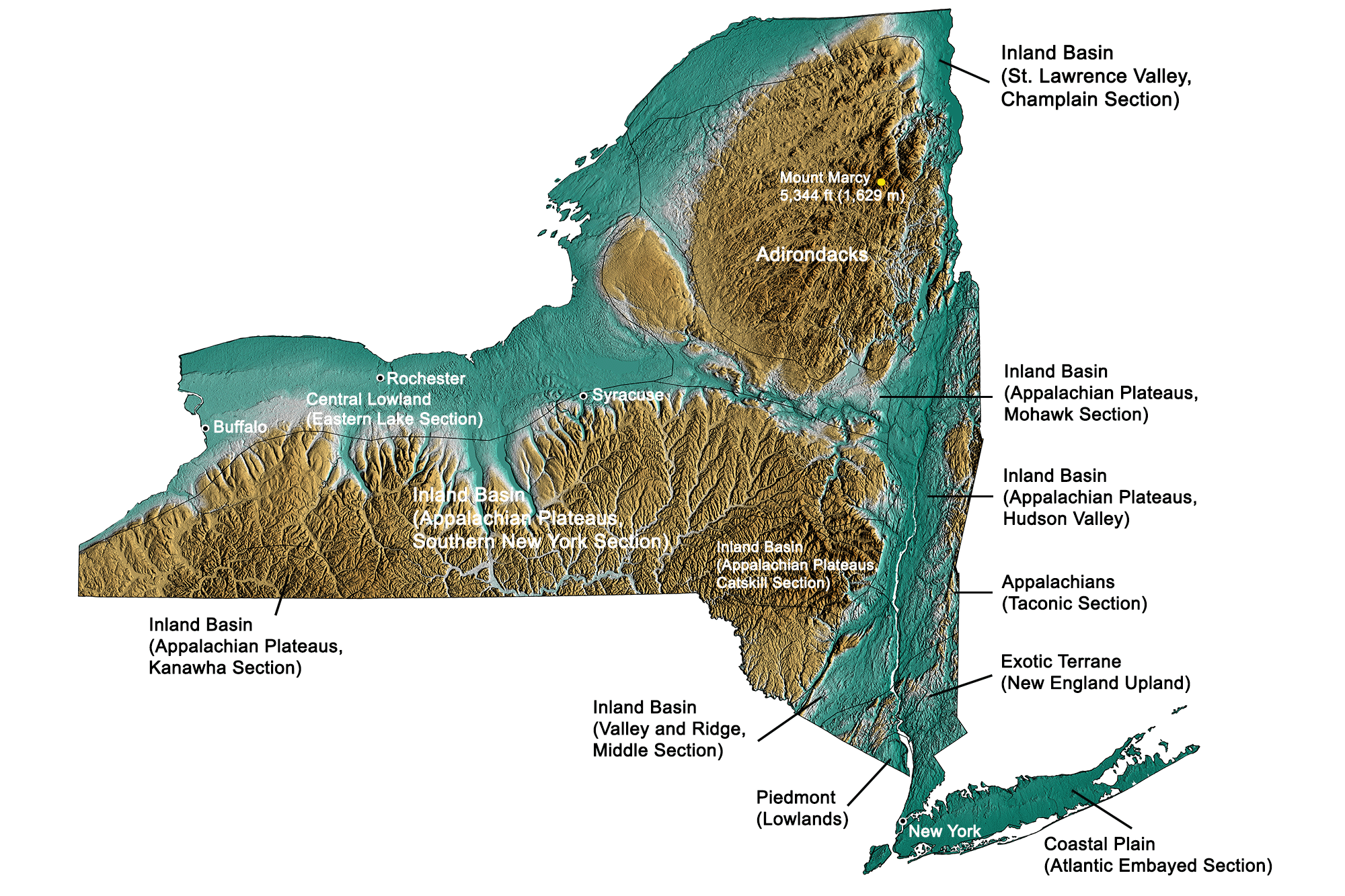
Topographic map of New York with physiographic regions and point of highest elevation identified. Topographic data are derived from the Shuttle Radar Topography Mission (SRTM GL3) Global 90m (SRTM_GL3) (Farr, T. G., and M. Kobrick, 2000, Shuttle Radar Topography Mission produces a wealth of data. Eos Trans. AGU, 81:583-583). Image by Kiera D. Crowley for the Earth@Home project.
Highest Elevation: Mount Marcy
At 1,629 meters (5,344 feet) above sea level, Mount Marcy, in the northeastern Adirondacks, is the highest point in the state of New York.
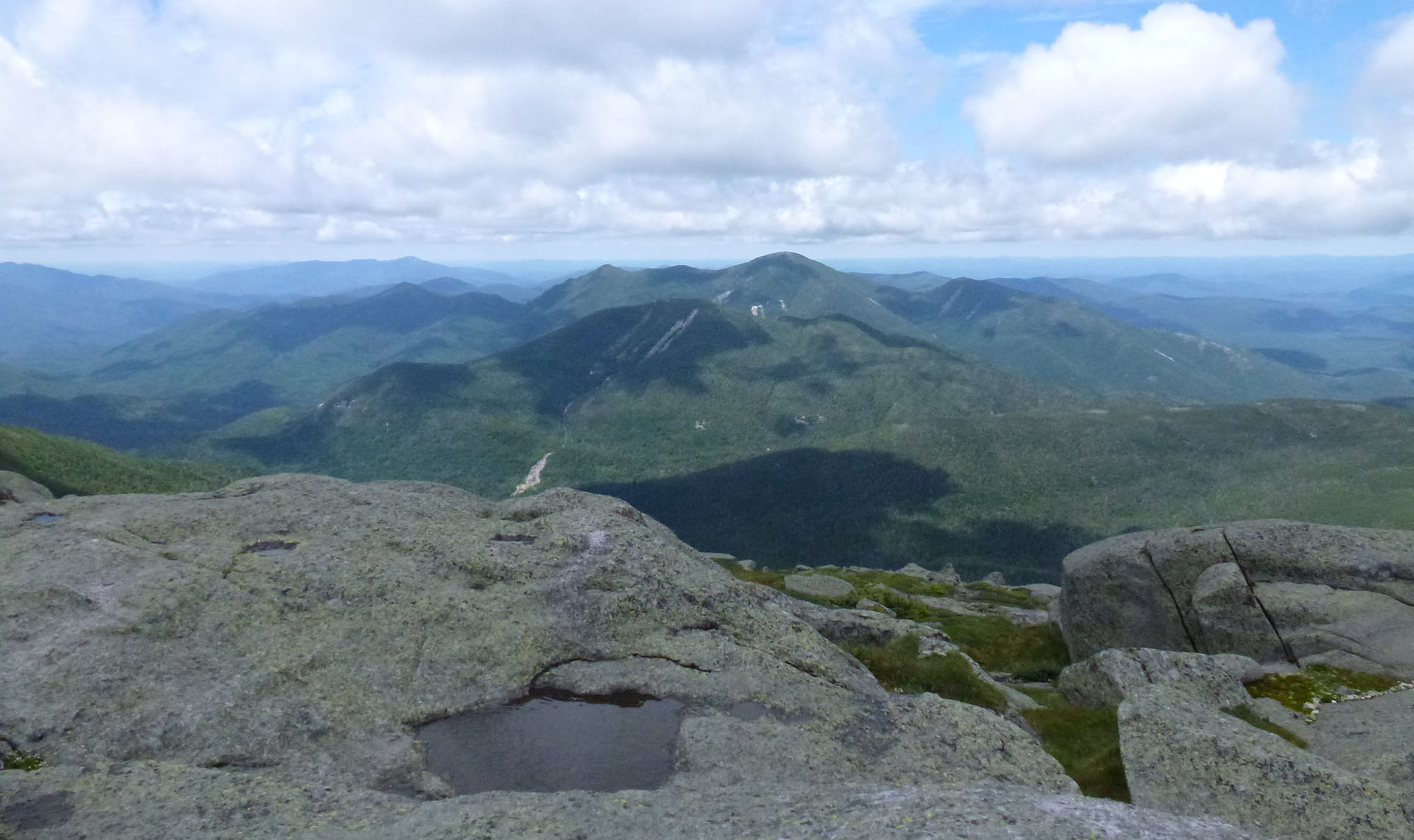
View from the summit of Mount Marcy in the Adirondack Mountains, the highest peak in the state of New York. Photo by Mark Taylor (Flickr; Creative Commons Attribution 2.0 Generic license; image cropped and resized).
Lowest Elevation: Atlantic Coast
New York's lowest points are along its Atlantic coastline, where the shore is at sea level.
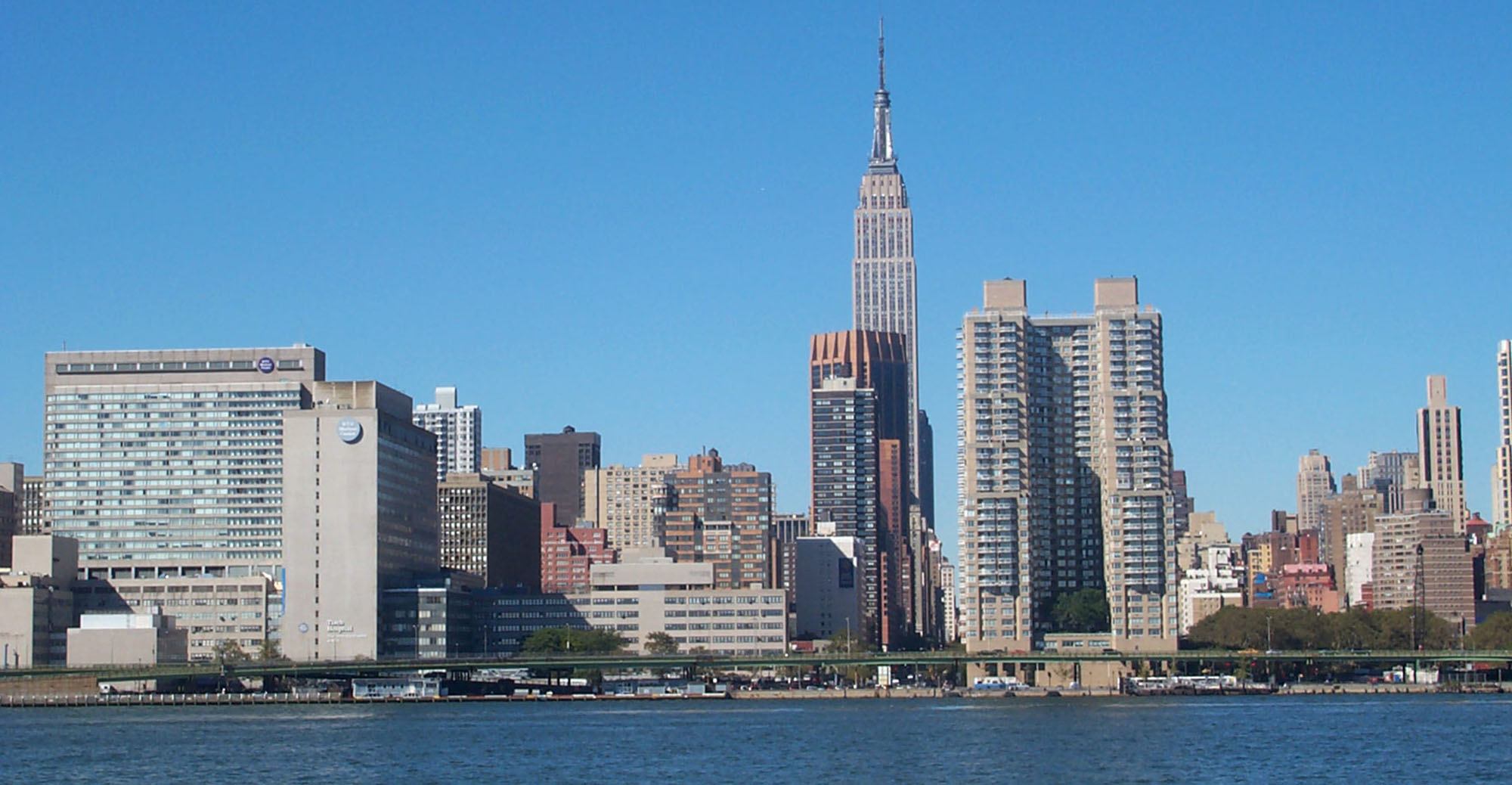
The skyline of New York City, as viewed from the water. Photo by Marc-Anthony Macon (Flickr; Creative Commons Attribution-ShareAlike 2.0 Generic license; image cropped and resized).
Places to Visit
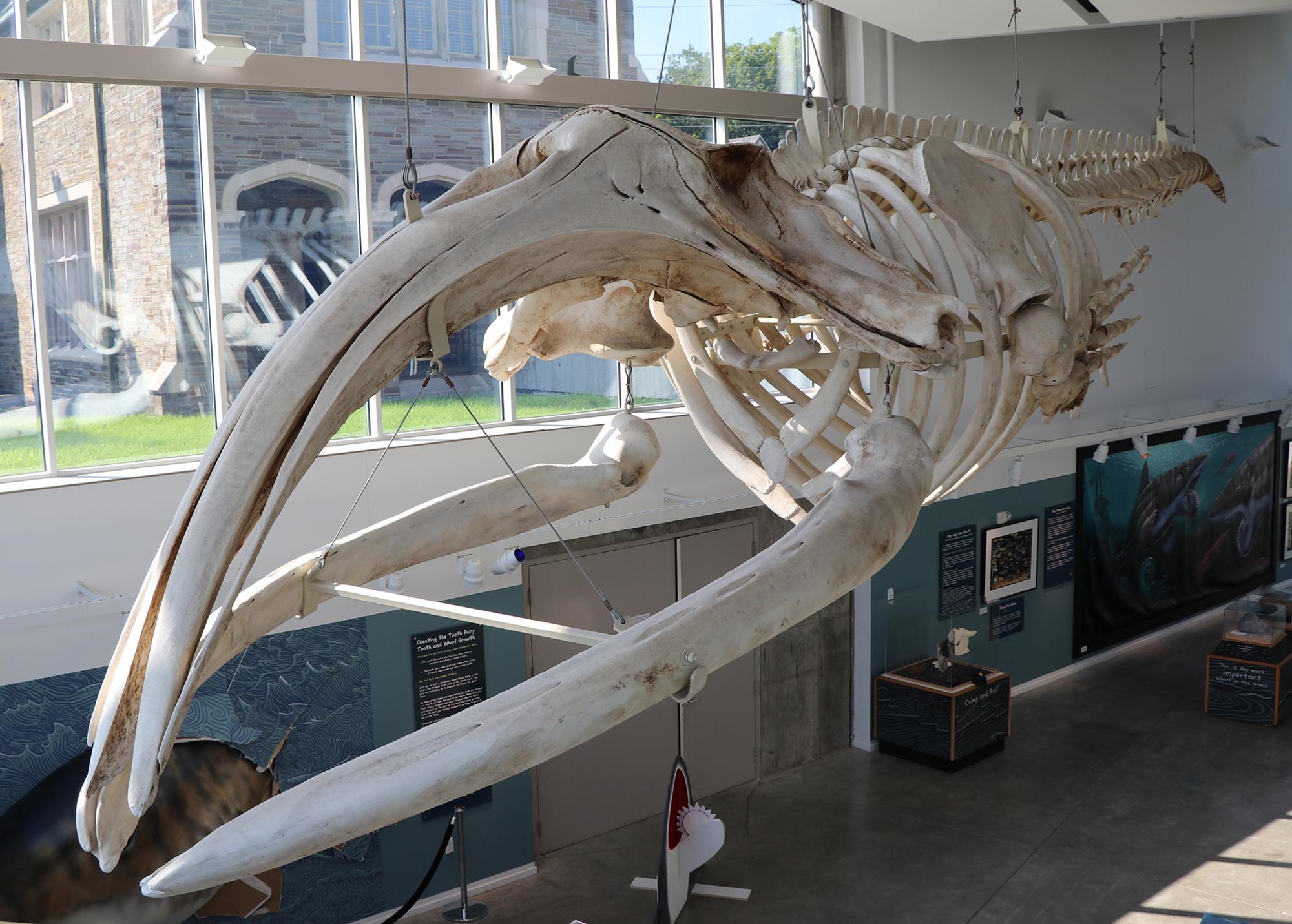
North Atlantic Right Whale skeleton mounted in the Museum of the Earth in Ithaca, New York.
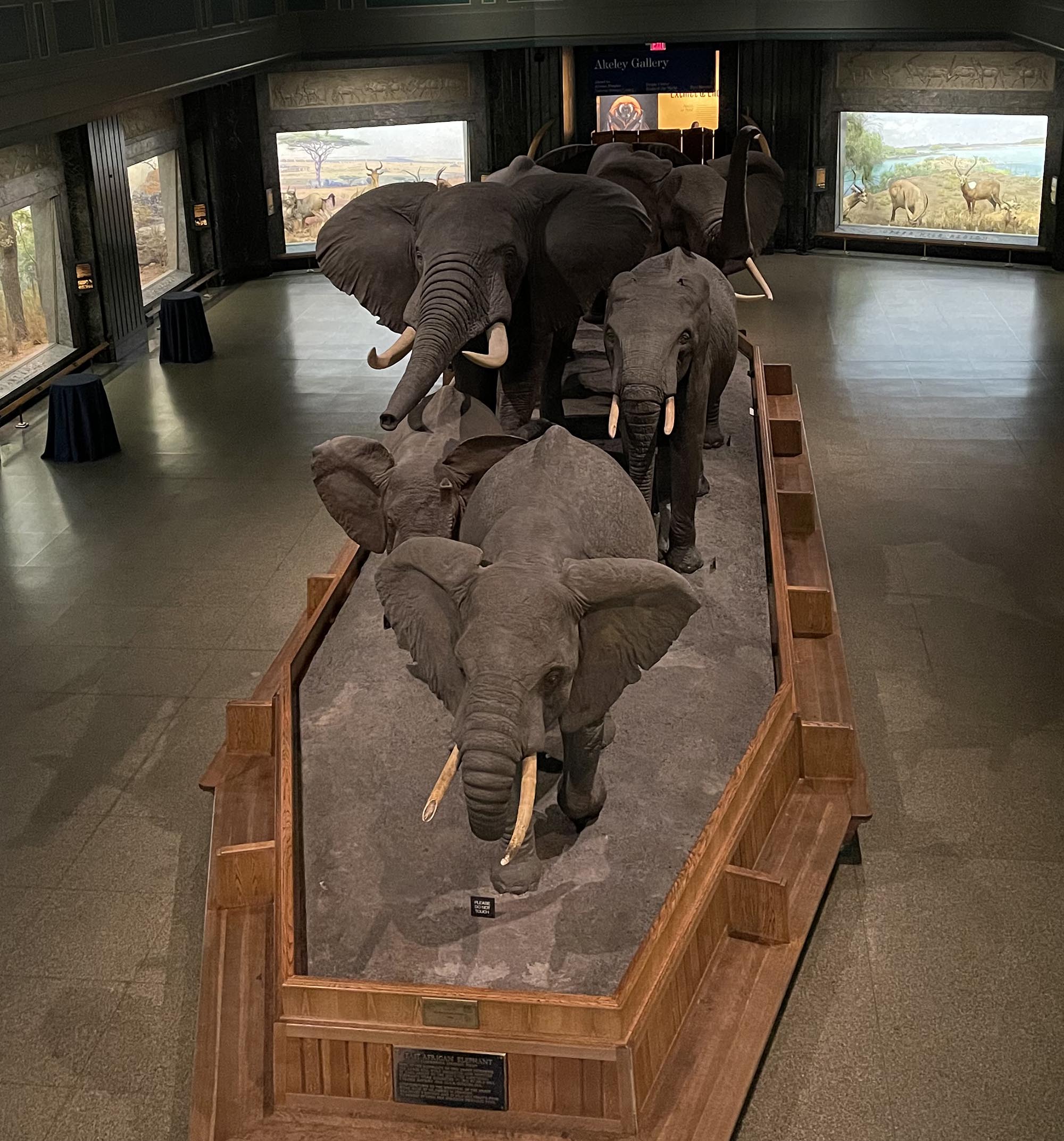
African elephants on display in the Akeley Hall of African Mammals at the AMNH in New York City. Photo by Kiera D. Crowley.
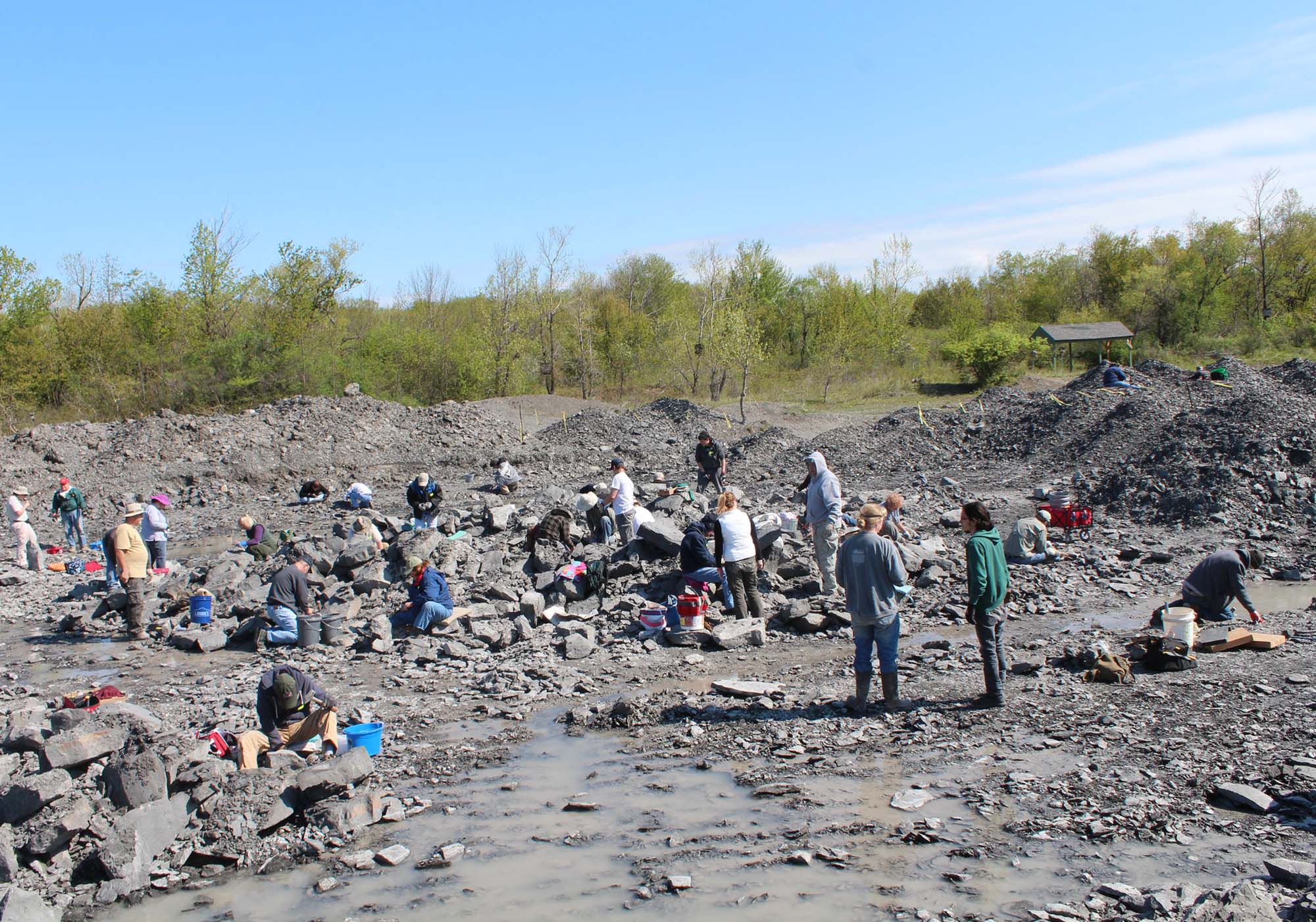
Visitors hunt for fossils with the experts at Penn Dixie Fossil Park. Photo by Anthony Sokolik (Flickr; Creative Commons Attribution-ShareAlike 2.0 Generic license; image resized).
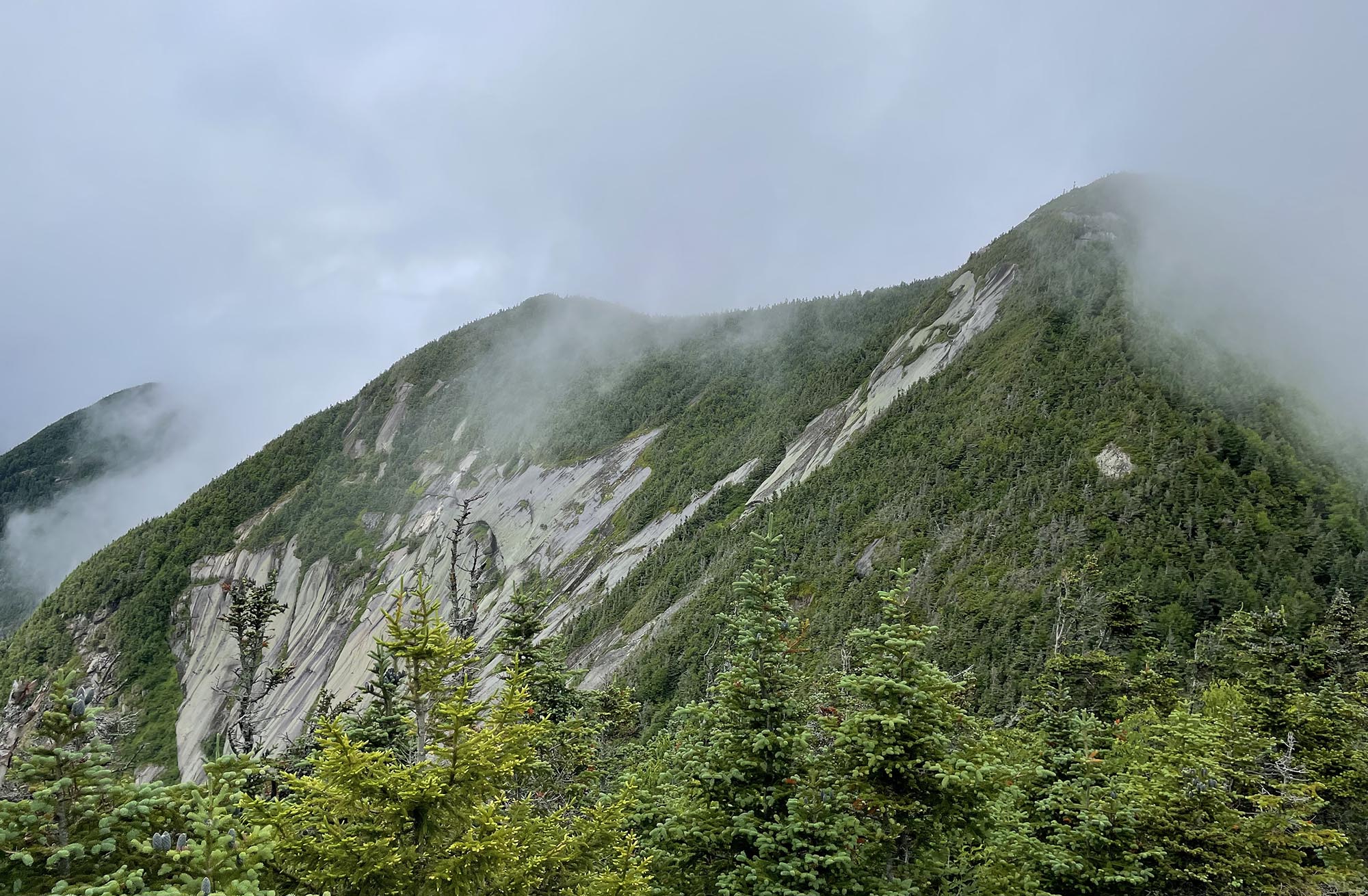
View of Adirondack peaks touching the clouds, from trails near the Gothics peaks and Keene Valley, New York. Photo by Kiera D. Crowley.

The New York State Museum building in Albany, New York. Photo by Craig Fildes (Flickr; Creative Commons Attribution-NonCommercial-NoDerivs 2.0 Generic license).
Additional resources
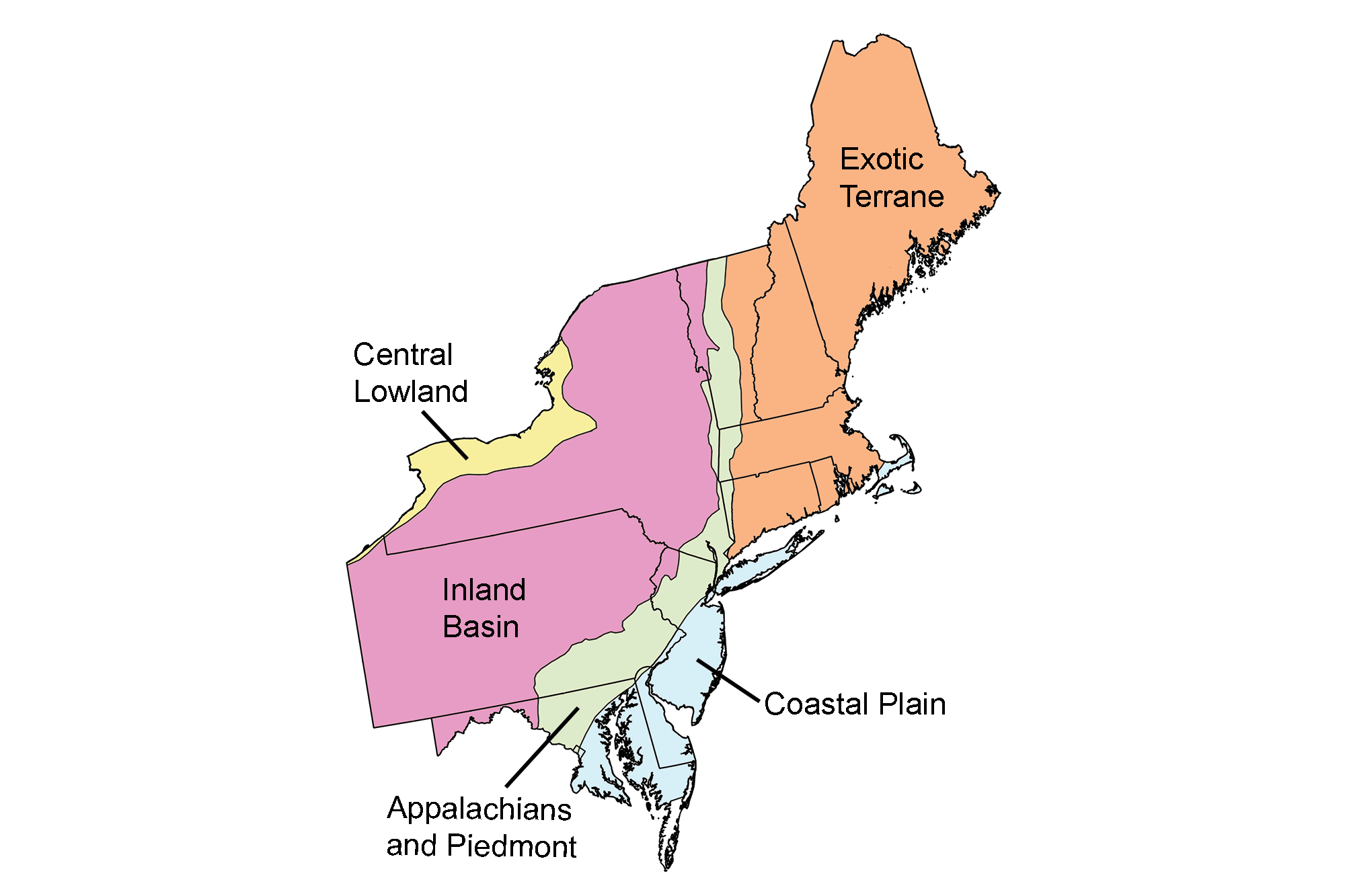
Earth@Home resources about XXXX and nearby states:
- Rocks: Central Lowland, Inland Basin, Appalachians and Piedmont, Coastal Plain, and Exotic Terrane.
- Fossils: Central Lowland, Inland Basin, Appalachians and Piedmont, Coastal Plain, and Exotic Terrane.
- Topography: Central Lowland, Inland Basin, Appalachians and Piedmont, Coastal Plain, and Exotic Terrane.
- Mineral Resources: Central Lowland, Inland Basin, Appalachians and Piedmont, Coastal Plain, and Exotic Terrane.
Earth@Home resources about the northeastern region of the United States:
